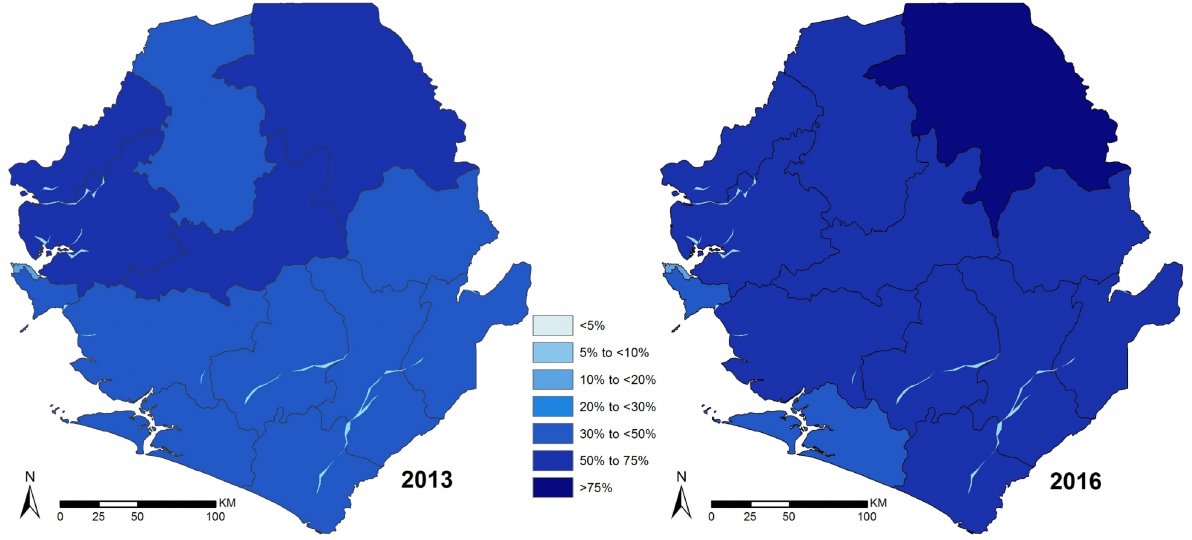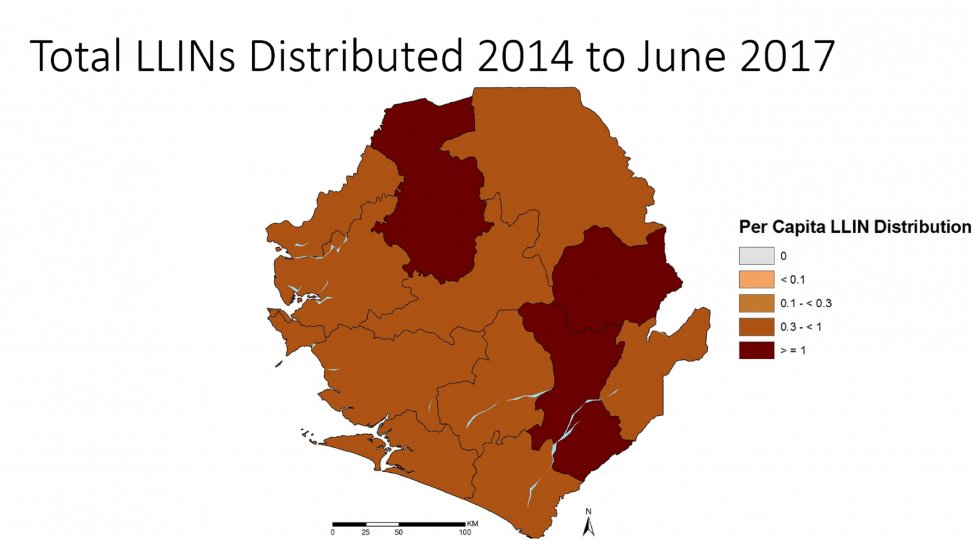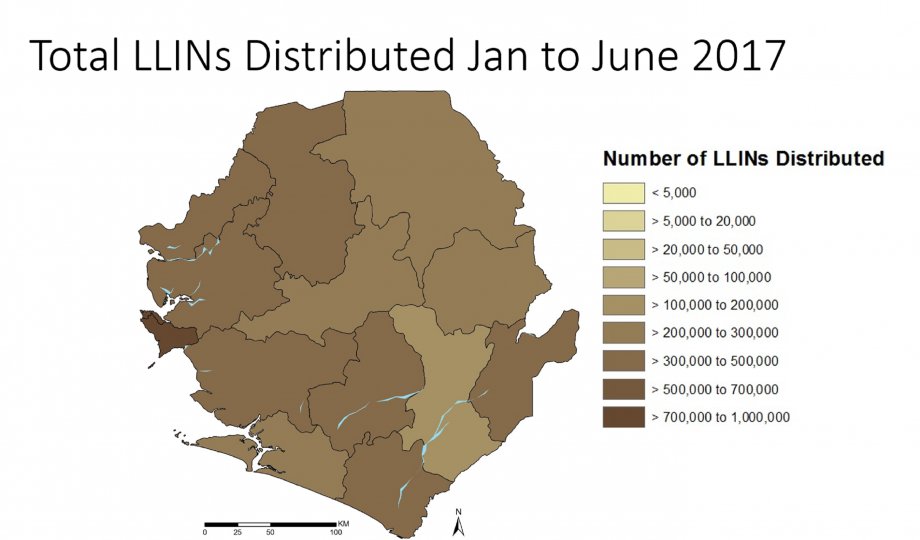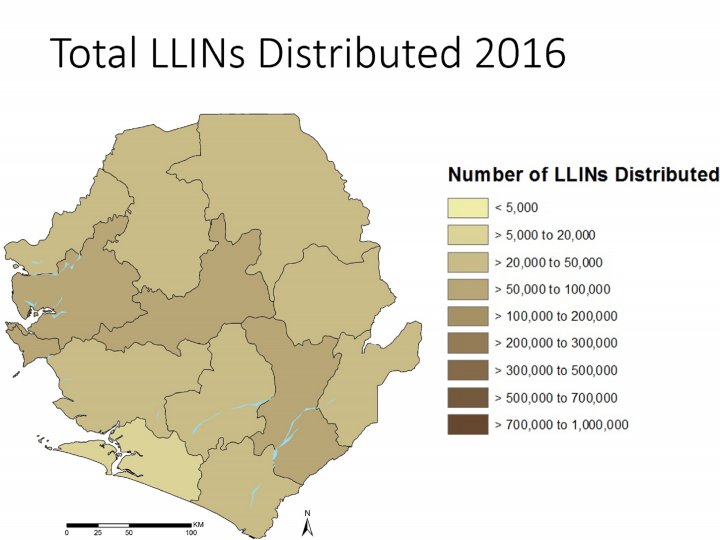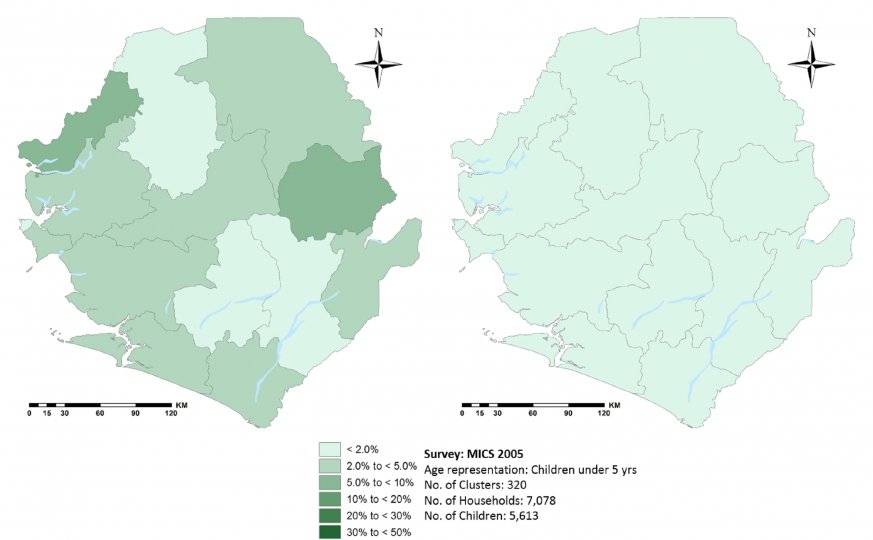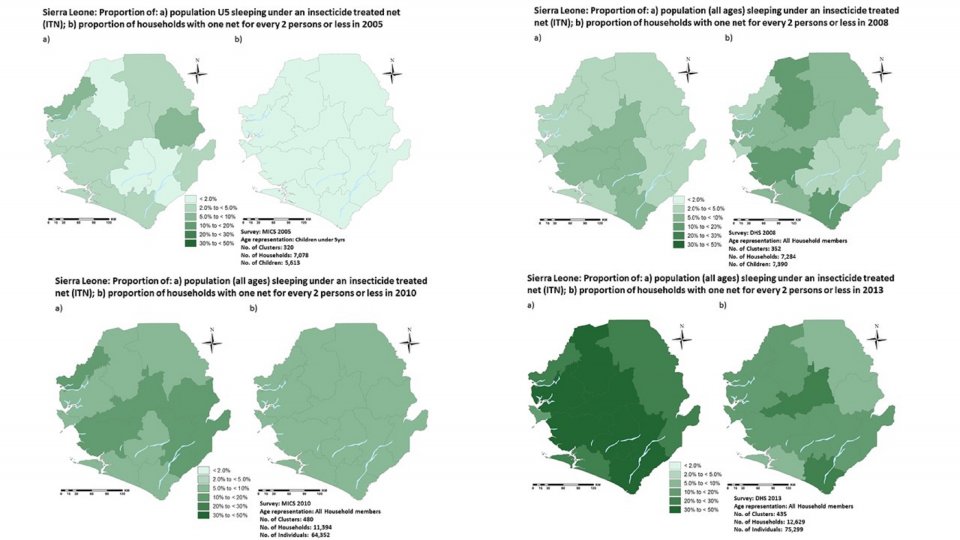Malaria in Sierra Leone
Malaria is endemic in Sierra Leone with stable and perennial transmission throughout the country. The entire population is at risk of the disease. Malaria remains the most common cause of illness and death in the country. It is estimated that about 2. 2 million outpatient visits are caused by malaria every year, of which about one million patients are under five years old. Pregnant women and children under five years old make up 4.4% and 17.7% of the total population, respectively, and are the most vulnerable groups.
Plasmodium falciparum is the predominant cause of malaria in Sierra Leone accounting for more than 90% of all malaria infections.
As of 2013, the approximate risk of malaria transmission for 2-10 year olds was:
- 7% at high risk (75-100%)
- 36% at moderate-high risk (50- 74%)
- 57% at moderate risk (10-49%).
In 2013, for the first time, Sierra Leone collected data on malaria parasitaemia in a Malaria Indicator Survey (MIS), until this survey there was only very limited data available from malaria prevalence studies in Sierra Leone. The MIS showed that 33% of children under five years old had fever during the two weeks preceding the survey, with a higher proportion of rural children (37%) than urban children (32%) having fever and 46% being found to be RDT positive. Analysis of the blood smears by microscopy revealed 43% of children under five years tested positive for malaria.
National Malaria Strategic Plan 2016–20
The Ministry of Health and Sanitation's vision is “Access to malaria control interventions for all”. Aiming in the medium term to reduce the current levels of malaria morbidity and mortality by 40% by 2020 compared with 2015.
The National Malaria Strategic Plan (NMSP) aligns to the guiding principles of the Sierra Leone National Recovery Plan (2015–2020) and the Basic Package of Essential Health Services 2010 (revised 2015). These principles are: universal coverage with proven malaria interventions, equity and equality and non-discrimination, participation and accountability and the right to the health elements of: availability, accessibility, acceptability, adequacy, quality and contiguous expansion of interventions. The cost of the NMSP 2016-2020 is USD 126 million over the five-year period.
The NMSP aims to do this through:
- Promoting, co-ordinating and supporting the delivery of effective malaria control interventions that will prevent and reduce morbidity, mortality and disability due to malaria, and its socio-economic consequences;
- Using new technologies to improve diagnosis, ensure rapid and prompt treatment for malaria and establish selective malaria vector control activities;
- Developing decentralised multi-sectorial, harmonised partnerships for malaria control in Sierra Leone, from the national down to the community level;
- Strengthening management and implementation capacity of the National Malaria Control Programme (NMCP) through effective coordination of partners;
- Strengthening surveillance, monitoring, evaluation and operational research for effective programme management.
The NMCP identified these objectives to achieve their target:
1 a. All suspected malaria cases should have access to confirmatory diagnosis;
1 b. All malaria cases to receive effective treatment;
2 a. Provide access to 100% of the population at risk with preventive measures by 2017;
2 b. To protect at least 80% of pregnant women and children under one year with IPT3 by 2020;
3. To provide knowledge to the population such that at least 80% of the population practices malaria prevention and treatment measures by 2018;
4. By 2020, at least 95% of health facilities report routinely on malaria programme performance; and
5. By 2020, maintain and strengthen capacity for programme management, coordination and partnership to achieve malaria programme performance at all levels.
Bednet coverage
Insecticide Treated Nets/Long Lasting Insecticidal Nets (ITN/LLIN) coverage in Sierra Leone has increased since 2005 when households with at least one mosquito net for every two people was estimated at <2%. As of 2014, coverage through the central area of the country ranged between 10– 19% coverage while in the south and very central areas were estimated to have between 30- 49% coverage. However, coverage remained relatively low in the east and southwest of the country ranging between 5–9%.
LINK activities
LINK produced a profile of malaria control and prevention for Sierra Leone in 2015 in collaboration with the NMCP. A mid-term engagement meeting took place in June 2017. The final dissemination meeting took place in December 2017 where a supplement to the profile, an updated malaria indicator poster and timeline were presented.
As part of Phase 2 work LINK collated evidence from 106 published articles or MSc/PhD theses and 39 implementation reports/ policies.
Development of malaria control timeline
A timeline of the history of malaria control in Sierra Leone was produced with the help of the NMCP in 2017. The history of malaria dates back to 1899 when Sir Ronald Ross of the Liverpool School of Tropical Medicine visited Freetown to 2017 when there was a mass national distribution campaign of 4.2 million free LLINs. In all, the timeline covers about 80 major events in malaria control specifically looking at the areas of vector control, chemoprevention, case management, surveillance, operational research and monitoring.

